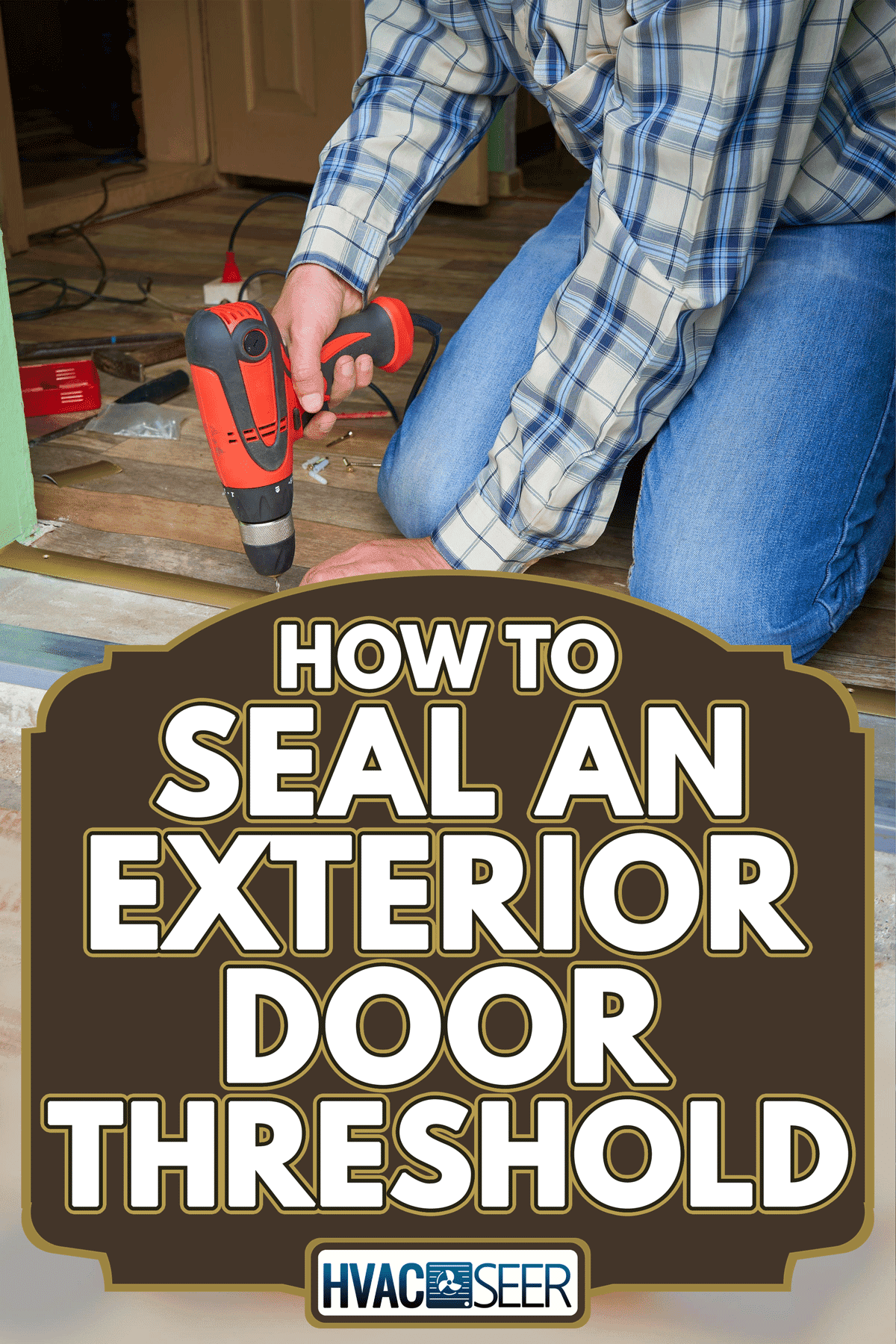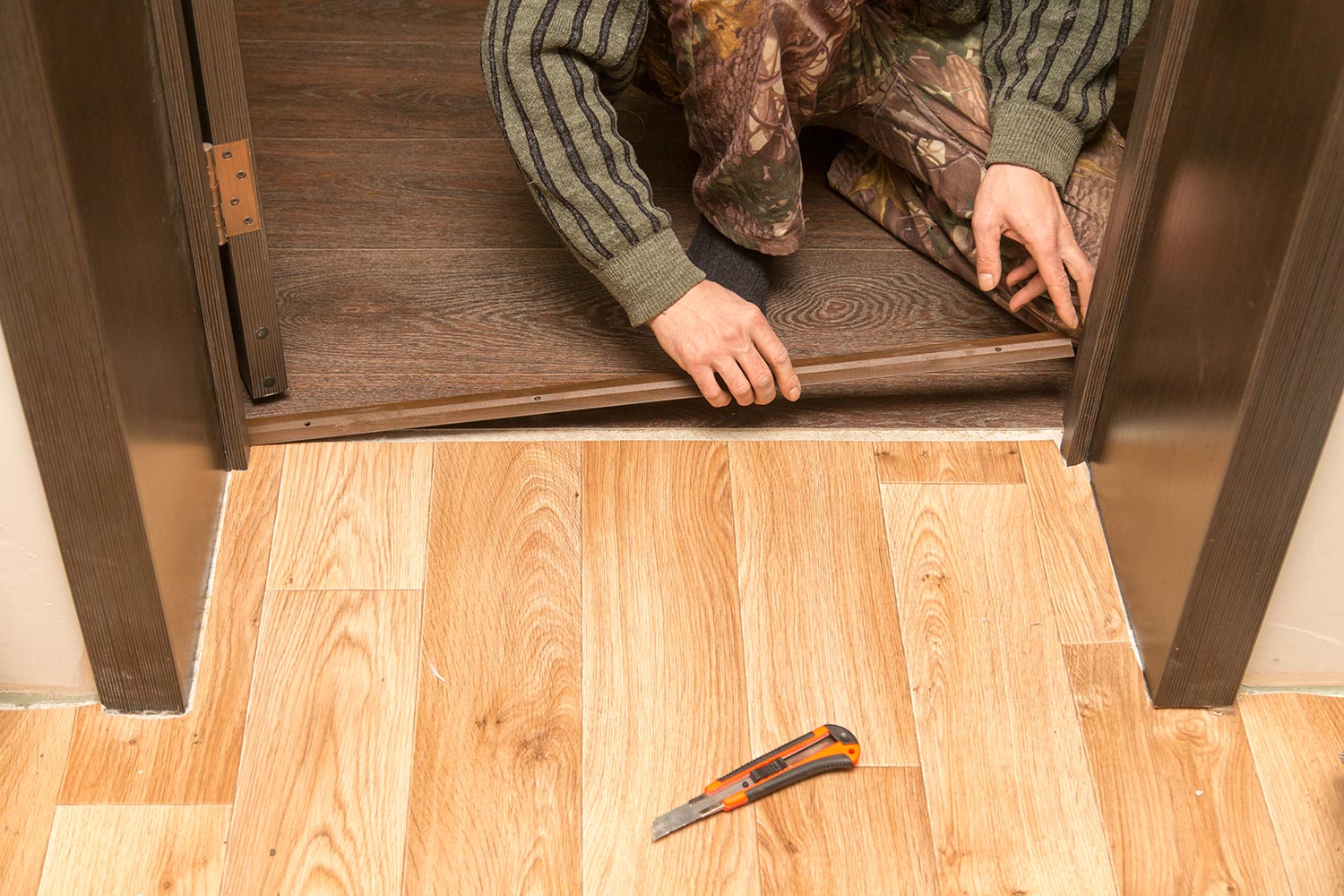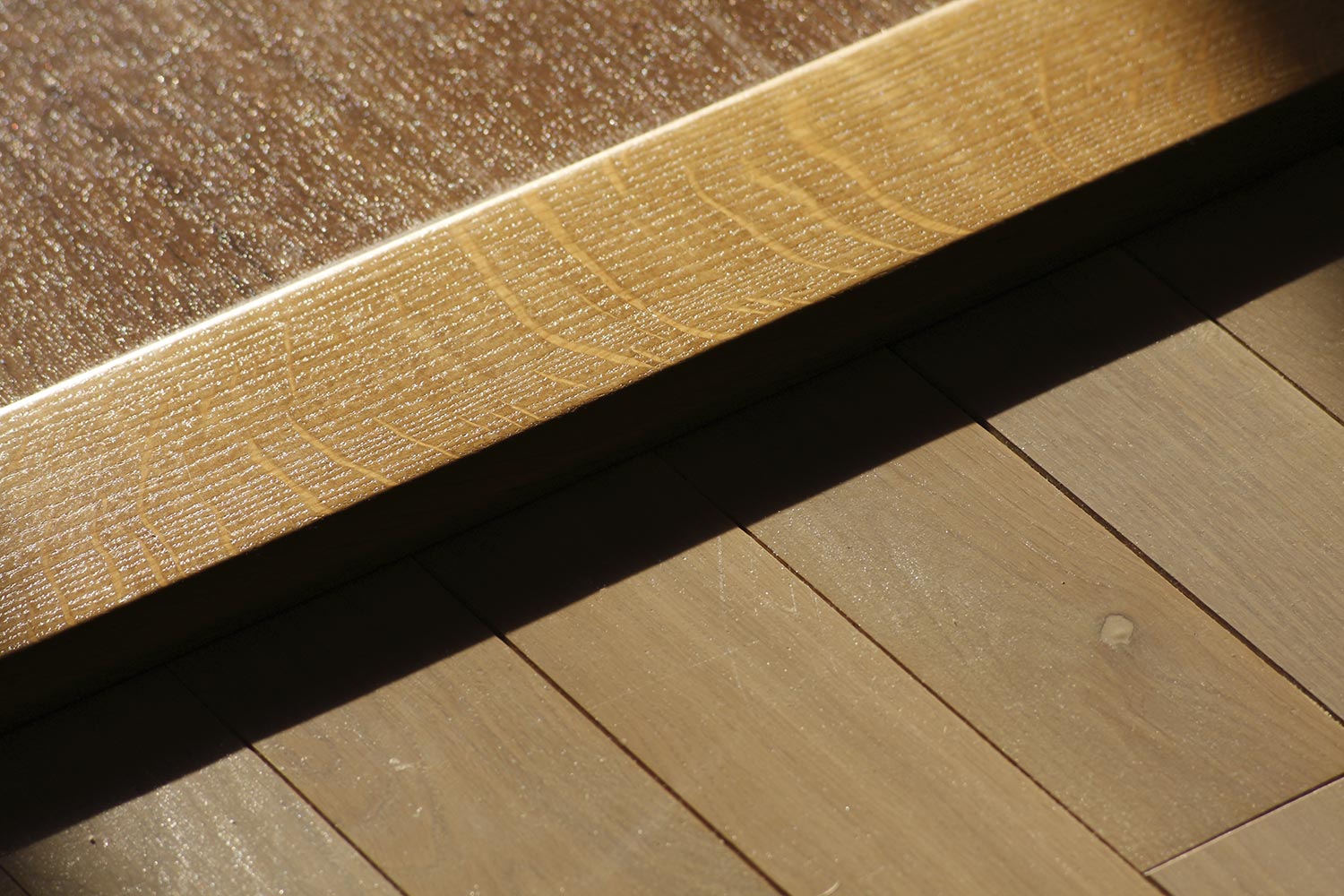Keeping the outside elements from seeping into your home can sometimes feel impossible. Do you want to try sealing an exterior door threshold but don't know where to start? Luckily, we've done extensive research into this topic and have the answers for you. Let's get into it.
Sealing an exterior door threshold shouldn't be too difficult. First, you want to use an expanding foam sealant underneath your door's threshold. This will fill in any air gaps your door may have.
You can also run a bead of sealant between the threshold and each doorstop, so there are various ways to do this.
As we begin, we will cover all things thresholds and discuss how to seal one. Whether you're noticing higher energy bills or want to prepare for the upcoming season, we're here to offer plenty of help. With that said, let's dive right into this post!

Do You Need To Seal An Exterior Door Threshold?
Although you don't technically "need" to seal an exterior door threshold, it can be helpful. Typically, you want to use a weatherproof sealant along the threshold of your exterior doors to keep outdoor air from seeping into your home.

Furthermore, this will also prevent water from damaging your threshold or house's interior flooring, so we recommend it. Again, this will come down to where you live and whether you find this added layer of protection essential or not.
According to This Old House, using an expanding foam sealant under your door's threshold can be beneficial in protecting it, so that's an idea to consider.
What Should I Use To Seal A Door Threshold?
Generally, the best types of sealant to use for a door threshold are silicone or urethane. As we mentioned above, expanding foam is also great at filling in any air bubbles.
Many homeowners also use a weatherproof strip along the base of their door's threshold alongside the sealant, so that's another idea.
Additionally, silicone caulk is a popular choice for exterior thresholds, so you have a few great options here. Regardless, you want to make sure the product you use is weatherproof and high-quality, or an issue will likely arise down the road.
![]()
Gorilla White 100% Silicone Sealant Caulk
This sealant is 100% silicone, dries white, works for exterior and interior doors, and is waterproof.
Should You Caulk An Exterior Door Threshold?
Yes! It is a good idea to seal your exterior threshold with caulk. As we said, using a weather/waterproof option is essential for outdoor entries to your home.
Think of caulking as a way to seal gaps between the door frame and the wall. Doing this can prevent outside elements from making their way inside your space.
Furthermore, caulking around the base and even sides of an exterior-facing door can give it a finished look, which helps with curb appeal. On top of that, many caulk products won't need to be redone for years on end, which means less upkeep for you.
How Long Does Caulk Last?
You can typically expect caulk to last around five years. Of course, this timeline will vary depending on the quality and outside exposure your caulking experiences.
How well you apply caulk will also impact its lifespan. Many professionals recommend checking the caulk throughout newer homes after the first year, as settling tends to be most noticeable.
However, you shouldn't notice too much change around your front or back door, but it's better to be safe than have to fix a problem later.
What Color Caulk Should You Use For Threshold?
When it comes to caulking color for a threshold, stick to something neutral. Considering most caulk is white, it's common to apply it and then paint it over.
Luckily, many brands offer "sand" shades, which won't be as noticeable as a brilliant white. Again, if your trim is white, you may not even notice the caulking, so this is different for everybody.
Moreover, you can find paintable solvent caulk for your threshold, so there's something for any design.
How Do You Protect A Wooden Threshold?
If you have a wooden threshold, you want to use a protective coating like polyurethane, varnish, or lacquer. Considering that wood is more susceptible to water damage, it's essential to use a product that will repel moisture.

According to Source Wood Floors, you'll want to apply these products using a paintbrush, roller, or even aerosol container, depending on the formula.
They also cover how using paint or extra products on a wood threshold will protect it from everyday wear and tear, so they serve many purposes.
What Wood Should I Use For A Threshold?
One of the better options for those wanting a wood threshold is oak. You will frequently see oak hardwood thresholds since this wood can handle everyday activities/traffic.
However, any hardwood should be okay for a threshold, so oak isn't the only choice. Another great threshold wood is pine, which will also be durable and last for years.
According to a discussion on Woodnet Forums, Pecan/hickory are viable options for a threshold, as they aren't as grained as maple or open-grained as oak. Pecan and hickory woods are also very hard, which can be good for busy entrances to a house.
What Is The Best Material For A Threshold?

In general, thresholds will be made of extruded aluminum. Of course, that's not to say using this material is the best, but it is the most common.
Other durable options for a threshold include brass, bronze, or stainless steel. Typically, brass and bronze thresholds will keep their finish as they age and tend to outlive aluminum options.
However, stainless steel is another great choice, as it won't oxidize, so that may be the best option for you. Regardless, you will inevitably need to replace your threshold eventually, so if yours starts to look beat up, you might want to invest in new, better material.
How Much Does It Cost To Repair A Front Door Threshold?
If the time comes for a new threshold or repair, expect to pay between $158 and $235. Of course, these are national averages, so you could spend less or more depending on your local market pricing.
With that said, it's possible to spend upwards of $600 to repair/replace a front door threshold, so this won't always be a cheap process. Luckily, most repair companies will give you a free estimate, so it's worth reaching out to a few different ones before spending any money.
Can You Replace A Threshold Yourself?
You can certainly replace a threshold yourself for anyone wanting to take on a DIY project. To begin:
- Grab the required tools (measuring tape, saw, drill, threshold strip, drill bit, sealant).
- Measure your doorway: width, length, and space between your flooring and door.
- Choose a threshold strip (ideally one that won't rust).
- Use a screwdriver to remove your old strip.
- Place your new threshold strip into its place.
- Use a sealant, like caulk, to secure this strip in place.
- Attach the strip using its designated screws, and you're set!
Remember, it's important to make sure your new threshold is set correctly, so you may need to drill extra holes into the floor to secure it.
How Do You Fill Large Gaps Around A Door Frame?
If you notice large gaps around your door frame, we recommend weatherstripping. Generally, sticky foam tape, tubular silicone, vinyl or rubber, corner pads, and felt rolls will do.
To do this, you want to make sure and remove any existing weatherstripping. Then, tighten any screws in your door's hinges. You can now replace the old weatherstripping, which should fix any significant holes/gaps.
CloudBuyer Storage Weather Stripping Seal Strip
This weatherstripping seal is self-adhesive, rubber material, can withstand weather up to 104 degrees Fahrenheit, is easy to cut, and comes in a 39.4-foot roll.
Follow this link to see it on Amazon.
Do You Need To Re-Seal An Exterior Door Threshold?
Yes, eventually, you will need to re-seal your exterior door thresholds. Luckily, this won't need to happen often, so don't expect to do this more than every three or so years.
A sealant's quality will affect its lifespan, so the better it is, the less maintenance you need to do. Furthermore, certain brands claim their sealant products last five-plus years, so keep an eye out for those key phrases.
To Wrap It Up
Whether you're building a home or want to spruce things up, knowing how to seal your exterior doors is essential. You can use expanding foam or high-quality caulk for your thresholds, from what we found.
You want to choose something durable, weatherproof, and won't oxidize when it comes to threshold material. We recommend brass, bronze, or stainless steel options.
Regardless, make sure to use high-quality products around your exterior doors, and don't forget to check the caulk on new homes after the first year.
Made it to the end? Check out these helpful related HVAC posts below!
How To Insulate Roll Up Garage Doors [Follow These 5 Steps]


